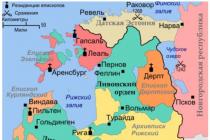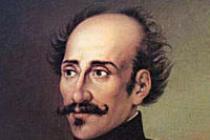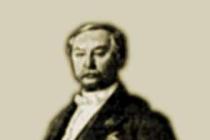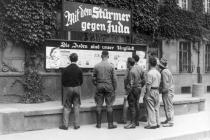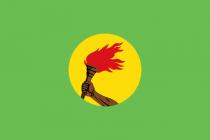Livonian Order, (late Latin domus sancte Marie Theutonicorum in Lyvonia; German Dutscher orden to Lyff land), a Catholic and military organization of German crusader knights that created its own state in the Eastern Baltic in the 13th-16th centuries. The Order was formed in 1237 after the defeat of the Order of the Sword at the Battle of Saul (1236). The remnants of the Swordsmen joined the Teutonic Order and the Livonian Order became a branch of the Teutonic Order in Livonia and Courland. The territory of the Livonian Order included a significant part of Latvian and Estonian lands.
The Livonian Order was headed by an elected master for life with residence in Riga or Wenden (Cesis). Fortified castles were governed by komturs and vogts, who reported to the annual meetings (capitula) of the highest ranks of the order. By the end of the 14th century, under the master, a council of 5-6 senior officials of the order was formed, which determined the political life of the order. There were 400-500 brothers (fratres) - full members of the Livonian Order (until the 16th century, then their number decreased to 120-150). In addition to brothers, the Livonian Order included priests and half-brothers (artisans and office workers). The Livonian army (about 4 thousand people at the beginning of the 15th century) consisted of brothers (with their armed bollards) and vassals; From the end of the 14th century, mercenary troops were also used. In the 13th century, the Livonian Order was the mainstay of the Catholic Church in the Eastern Baltic. Defeat at the Battle of the Ice (1242) and at the Battle of Durbe (1260) stopped the crusaders' advance to the east.
From the end of the 13th century, the order began to fight against the Riga archbishops for political hegemony in the Eastern Baltic; Having won the victory, the Livonian Order became the feudal lord of Riga in 1330. But the defeat of the Teutonic Order in the Battle of Grunwald (1410) undermined the political influence of the Livonian Order. The Treaty of Kirchholm (Salaspils) (1452) formalized the power of two feudal lords (the archbishop and the order) over Riga. This situation remained until the 1560s, despite the resistance of the city and the ongoing clashes of the lords. ;
In the 14th - first half of the 15th centuries, the main direction of the foreign policy of the Livonian Order was the fight against Lithuania. From the second half of the 15th century, the order had another dangerous rival - the Russian state. The political position of the Livonian Order was weakened by the Reformation that began in the Eastern Baltic in the 1520s. During the Livonian War of 1558-1583, the order collapsed in 1561, and the Duchy of Courland was created on its territory. The last master of the Livonian Order, Gottgard Kettler, converted to Lutheranism and became the first Duke of Courland. Part of the land was divided between Sweden, the Grand Duchy of Lithuania and Denmark. The Livonian Order was finally liquidated on March 5, 1562.
The Livonian Order of Knights was formed by German knights in the first half of the 13th century in Livonia (modern Latvia and Estonia). It was a branch of the Teutonic Order in the Baltic states. Initially, the Livonian Order was called the Order of the Sword.
The spiritual knightly order of the Swordsmen was founded in 1202 on the initiative of the Cistercian Dietrich and with the assistance of Pope Innocent III. The Order was created in order to bring the Christian faith to the Baltic peoples of the Livonians, Estonians, and Semigallians. The charter of the sword bearers was based on the charter of the Knights Templar, and the distinctive sign was a sword on a white background. The Order of the Swordsmen was subordinate to the Pope and Bishop Albert of Riga. The Sword Bearers were the bishop's military force, with the help of which it was possible to both maintain order in the conquered lands and conquer new territories. Von Rohrbach became the first Master of the Order of the Sword in 1202. He founded the city of Wenden (modern Cesis in Latvia). According to the agreement between the Riga bishop and the master, 2/3 of all the land that will be conquered by the order should belong to the church, that is, to the bishop and the order, which recognized itself as a vassal of the church. At the beginning of the 13th century, the Swordsmen captured vast lands in the Eastern Baltic, a third of which was assigned to the order by the Pope.
In 1214, clashes between Russian princes and the Order of the Sword began. In 1217, the Danish king Valdemar II landed on the shores of Estonia, seized the land, converted the inhabitants to Christianity, founded the Revel fortress (modern Tallinn) and, by agreement in 1230, ceded part of Estonia to the order. In 1236, the army of the Lithuanian prince Mindaugas, together with the Semigallians, inflicted a crushing defeat on the army of the Order of the Swordsmen in the Battle of Saul (modern Shau-liai). This defeat significantly undermined the strength of the order and served as an impetus for the unification of the weakening Order of the Swordsmen with the gaining strength of the Teutonic Order. Using influence in the papal curia, as well as at the court of the emperor, in 1237, the Grand Master of the Teutonic Order, Hermann von Salz, carried out the unification of the Order of the Swordsmen with the Teutonic Order. This association gave the Crusader knights enormous advantages in conquering the Baltic lands. After the unification, the Order of the Swordsmen became known as the Livonian Order. From that time on, it began to be controlled by local masters.
By the end of the 13th century, the Livonian Order became part of the confederation of five states, together with the Archbishopric of Riga, Courland, Dorpat and Ezel bishoprics. Since then, constant strife began between the masters of the order and the bishops. The Confederation was located in Livonia. The Livonian Order had the most extensive possessions. His lands were deeply wedged into the possessions of other states, thereby isolating them from each other. This arrangement of possessions and great military superiority allowed the order to eventually occupy a dominant position among the Livonian states. The Livonian Order also tried to conquer lands belonging to Rus', but in 1242 Alexander Nevsky defeated the knights of the Livonian Order in the battle of Lake Peipsi. In connection with this, the Livonian knights were forced to conclude a peace treaty, according to which they renounced their claims to Russian lands. In 1343, a peasant uprising broke out in northwestern Estonia, which escalated into a peasant war that lasted from 1343 to 1345, which ended in the complete defeat of the rebels. But this uprising showed how difficult it was for Denmark to maintain its possessions in distant Estonia, and therefore the King of Denmark Valdemar IV Atterdag, meeting the requests of the Livonian Order, sold the lands that belonged to him for 19,000 Cologne marks of pure silver. Thus, by the middle of the 14th century, the territory of Livonia ended up in the hands of German feudal lords. The Order sought to create a unified state in Livonia, subordinate to its authority, by pushing members of the Order into archbishops, bishops and house chapters. These plans of the order were opposed by the Archbishop of Riga, who himself tried to expand his power - to extend his suzerain rights to the order and the city of Riga. In the 16th century, the Livonian states watched the strengthening of Russia with alarm and concern. The Order, fearing the further strengthening of the Russian state, prevented the import of industrial products and raw materials that were important from a military point of view, as well as the entry of foreign specialists into Russia. The Livonian Order was an ally in the war of the Grand Duchy of Lithuania against Russia, which lasted from 1501 to 1503. The last master of the Livonian Order from 1559 to 1562, Gotthard Kettler, put an end to the existence of the Livonian Order. Gotthard Kettler was a representative of feudal lord groups with a Polish orientation. He was elected coadjutor of the Master of the Order of Fürstenberg, but soon he managed, through intrigue, to force Fürstenberg (who was hostile to Poland) to leave his position, and Kettler himself became the Master of the Order. As Master of the Order, he swore allegiance to the King of Poland in 1562 and received from him the title of Duke of Courland. As Duke of Courland he reigned from 1562 to 1582.
Masters of the Livonian Order:1. Hermann Valcke (1237 - 1239).
2. Andreas von Velven (1240 - 1241).
3. Diebirik von Groningen (1242 - 1245).
4. Heinrich von Hemburg (1245 - 1246).
5. Andreas von Stirland (1248 - 1253).
6. Anno von Sangerhausen (1253 - 1256).
7. Burchard von Hornhusen (1257 - 1260).
8. Werner (1261 - 1263).
9. Konrad von Manbern (1263 - 1266).
10. Otto von Lutterberg (1266 - 1270).
11. Walter von Northeken (1270 - 1273).
12. Ernst von Ratzenburg (1273 - 1279).
13. Conrad von Fechtwagen (1279 - 1281).
14. Wilken von Enborg (1281 - 1287).
15. Conrad von Hasigenstein (1288 - 1290).
16. Halt (1290 - 1293).
17. Heinrich von Dinkelag (1295 - 1296).
18. Bruno (1296 - 1298).
19. Gottfried von Rogge (1298 - 1307).
20. Konrad von Erck (1309 - 1322).
21. Ketelhob (1322 - 1324).
22. Hane (1324 - 1328).
23. Everhard von Monheim (1328 - 1340).
24. Buchard von Drileben (1340 - 1345).
25. Goshin von Hericke (1345 - 1359).
26. Arnold von Wetinghof (1359 - 1364).
27. Wilhelm von Vrumersheim (1364 - 1385).
28. R. von Eltz (1385 - 1389).
29. Volmer von Brugen (1389 - 1401).
30. Conrad von Wetinghof (1401 - 1413).
31. Dietrich Tork (1413 - 1415).
32. Siegfried Lander von Spanheim (1415 - 1424).
33. G. von Rutenberg (1424 - 1433).
34. Franco Kerskoff (1433 - 1435).
35. Heinrich von Bockenward (1435 - 1437).
36. X. V. von Overberg (1438 - 1450).
37. Ehan Osthof von Menged (1450 - 1469).
38. V. von Gers (1470 - 1471).
39. Bernd von der Borg (1471 - 1483).
40. Johann Freytag von Loringhofen (1483 - 1494).
41. Voltaire von Plettenberg (1494 - 1535).
42. Hermann von Bruggeney - Hasenkamp (1535 - 1549).
43. Johann von der Recke (1549 - 1551).
44. Heinrich von Galen (1551 - 1557).
45. Wilhelm von Furstenberg (1557 - 1559).
46. Gotthard Kettler (1559 - 1561).
Zharkov Sergey Vladimirovich “The history of the creation of knightly orders and a catalog of bladed weapons, equipment of knights of medieval Europe”
Letter to the editors of MNG
As encyclopedic sources indicate, “The Battle of the Ice is a battle on the ice of Lake Peipus on April 5, 1242 between Russian troops led by Alexander Nevsky and the German crusaders.” What did they need in the Pskov region, and how did they end up there?.. I heard that official historiography allegedly kept silent and is keeping silent about the fact that the German knights did not go to Pskov, but from Pskov after performing guard duty there to protect this city, carried out in in accordance with the agreement between them and the Pskov prince. And there was no “armada” there. As if the attack on them by Alexander Nevsky’s squad was carried out for the purpose of robbery and captivity (for further ransom). If possible, I ask you to answer - where is the truth and where is fiction?
Gennady Goldman, Krasnoyarsk
We asked Prof. to respond to this letter. Arkady German. The essay turned out to be voluminous, so we plan to publish it with a continuation. So…
Crusades
The main directions of the crusades carried out in the 11th–13th centuries by the Catholic Church and Western European chivalry were the Middle East (Syria, Palestine, North Africa). They were conducted under the banner of liberation from the “infidels” (Muslims) of the Holy Land (Palestine) and the Holy Sepulcher. At the same time, some of the crusaders were sent to other areas to convert pagans to Christianity. One of the objects of increased attention and expansion of Catholicism since the 12th century was the Baltic region and the Baltic and Slavic tribes that lived here.
The Baltic states were well known in Western Europe. German, Danish, Swedish and other merchants conducted active trade with local tribes. Maybe that’s why it became one of the important objects of the forced implantation of Christianity.
The first major crusade to the Baltics took place in 1147. It was directed against the Polabian-Baltic Slavs. German, Burgundian, Danish and other knights, as well as the Danish fleet, took part in the campaign. Thanks to the active resistance of the Bodrichi, Ruyan, Lyutich, Pomeranian and other tribes, the campaign actually failed.
In 1185, the missionary Maynard arrived at the mouth of the Daugava River, preaching Christianity to the local Livonian tribes. In 1186 he built the Ikskul castle and was soon appointed bishop. Several armed clashes with the Livonians and the murder of Maynard's successor, Bishop Berthold, in 1198 served as a pretext for the start of the crusades in the Baltic states, which contributed to the resettlement of a large number of Germans, Danes and other Western Europeans into the region. The third bishop of Livonia, Albert Bekeshovede (Buxhoeveden), founded the city of Riga (first mentioned in 1198) and led several successful campaigns of conquest. In these campaigns, the Order of the Swordsmen provided him with active assistance.
Order of the Sword
It was founded with the assistance of Bishop Albert, based on a bull of Pope Innocent III in 1201. Its official name is “Brothers of Christ’s Army.” The traditional name of the Swordsmen comes from the image of a red sword with a cross on their white cloaks. The charter of the Swordsmen was based on the charter of the Templars (or templars - members of the Catholic spiritual knightly order, organized in Jerusalem shortly after the first crusade in approximately 1118 by French knights to protect pilgrims and strengthen the state of the crusaders in Palestine and Syria). According to the agreement between the Riga bishop and the grandmaster, two-thirds of all the land that will be conquered by the order must belong to the church. The first Grand Master or Master of the Order (1202–1208) was Vino von Rohrbach. He founded the Wenden fortress (modern Cesis in Latvia), which became the capital of the Order. During the period of the most active conquests (1208–1236), it was led by the second master Volkvin. Initially, the Order was subordinate to the bishop and acted on his instructions. Until 1208, the Swordsmen fought exclusively alongside the bishop's troops, conducting military operations only in agreement with him.
In 1205–1206, the Livs, who lived along the lower reaches of the Western Dvina, were subjugated. In 1208, the Lettas were baptized, after which the crusaders, together with them, began an offensive in a northern direction, against the Estonians. From this moment on, the actions of the Order of the Swordsmen begin to be largely independent in nature (especially during military operations). In the same year, the knights managed to break the resistance of the Polotsk appanage prince from Koknese, and the next year, another Polotsk appanage prince, Vsevolod of Gertsik, recognized vassal dependence on the Riga bishop. The fight against the Estonians was long and persistent and more than once resulted in the defeat of the knights. For example, as a result of the general uprising of the Estonians in 1222–1223, they managed to free themselves from knightly tutelage for some time. Only in 1224 did the crusaders finally subjugate the Estonians living on the continent, and in 1227 those who inhabited the island of Ezel.
The Danish king Valdemar P. also took part in the conquest of the Estonians. In 1217, he landed on the shores of Northern Estonia, conquered it, converted the inhabitants to Christianity, and founded the Revel fortress (modern Tallinn). According to the treaty of 1230, Valdemar ceded part of the captured territory to the Order of the Sword.
In the 1220s, the Order conquered Semigaly and Selo, and in the late 1220s and early 1230s, the Curonians. By 1236, all of these peoples found themselves, to one degree or another, subjugated by Western aliens.
Reasons for the Crusaders' success
The main reasons for the success of the crusader movement in the Baltics can be cited as the high spiritual spirit of its participants, who believed that they were carrying out a highly godly mission and imagined themselves as an instrument of God. The military-technical superiority of the crusaders over the local Baltic peoples played a role.
In addition, the crusaders used the help of local nobility. Their ally became part of the princes of the Livs and Letts, who did not miss almost a single military enterprise of the knights. Since 1219, individual Estonian elders also took part in the crusading campaigns. By coming to the aid of the crusaders, the local nobility received a share of the captured booty and a guarantee of maintaining their privileged social position.
In joint campaigns, detachments of local princes were used by the crusaders for the most part to devastate and plunder enemy territory, which they coped with in the best possible way. Or these detachments were sent in the first ranks to storm pagan fortifications. In field battles, the Baltic detachments were assigned a supporting role. And the local princes, with rare exceptions, like the Livonian prince Kaupo (a consistent and staunch supporter of the Catholics), were not particularly steadfast, and if they saw that victory was leaning towards the enemy, they fled from the battlefield. This is how, for example, the Livs behaved in the battle on Ymer in 1210, the Livs and Letts in a clash with the Russians in the fall of 1218, and the Estonians in the Battle of the Ice in 1242.
The knights did not trust their allies
According to the chronicler Henry of Latvia, in 1206, during the defense of Golm from Russian squads, “the Teutons, ... fearing treason on the part of the Livs (who were in the garrison of the fortress. - Author’s note), remained on the ramparts day and night in full armor, guarding the castle from both friends inside and enemies from without.” When the Estonians raised a general uprising at the end of 1222 and the beginning of 1223, they did not even have to take the knightly fortresses by storm: their compatriots from the garrisons simply massacred the crusaders and joined the rebels. Having suppressed the uprising, the crusaders restored their castles, but Estonians were no longer allowed into them.
In the tragic Battle of Siauliai (1236) for the crusaders, part of the Baltic warriors defected to the Lithuanians, which finally decided the fate of the battle.
By supporting the Crusaders, the Balts were largely trying to solve their own problems and use the Crusaders for their own defense. The Letts were afraid of the Livs and Estonians, the Livs were afraid of the Letts and Estonians, the Estonians and Letts were afraid of the Russians. And all together – Lithuanians. The knights fought with the Balts side by side, interfering in their internecine struggle. But their main goal was not to help the local peoples, but, using their feuds, to subjugate them. Ultimately, they did this largely through the hands of the Balts themselves, successfully applying a policy based on the principle of “divide and rule”, turning from allies and protectors into masters.
Russians and Lithuanians against the Order of the Sword
Serious opponents of the Swordsmen and the Livonian bishop were the Russians and Lithuanians. It was unprofitable for both the Russian and Lithuanian princes to have a strong, organized and aggressive state on their borders, which conquered territories in which it was always possible to have good booty. In addition, they understood that their lands could soon become the object of knightly expansion. Therefore, at every opportunity, the Russians and Lithuanians constantly attacked the knightly lands, plundered the knightly castles and cities, and captured some of the territories of the Order. In these actions, the help of the local population, conquered by the Order, was often used.
The crusaders themselves clearly distinguished between Russians and Lithuanians. The attitude towards Russians, as Christians, albeit Eastern, was much more loyal. At least, in their official statements, both the leadership of the Order and the Bishop of Riga did not express any intentions to conquer Russian lands. However, the seizure of part of the Polotsk lands and the establishment of vassalage over some Polotsk appanage princes indicated the opposite.
The attitude towards the Lithuanians, as pagans, was much harsher. However, until 1236, the knights, busy conquering various Baltic tribes, practically did not touch the Lithuanians, while they quite often attacked the possessions of the Order.
Clashes between Russian princes and knights
They began from the very first years of the Order’s existence. In 1216, one of the knightly commanders, Berthold of Wenden, defeated a Russian detachment that was devastating the lands of the Letts.
The next year, 1217, turned out to be extremely difficult for the swordsmen, as for all Livonian knights. In February, a large army under the command of Prince Vladimir of Pskov and the Novgorod mayor Tverdislav invaded the territory of Estonia. In addition to Russian warriors, it included Estonians who had retreated from Christianity. In total there were about twenty thousand warriors. The combined forces approached the Odenpe Swordsmen fortress and besieged it.
The garrison of bishops' crossbowmen and swordsmen defending the fortress found themselves in a desperate situation. A united army of brother knights, the bishop's men and their Baltic allies moved to the rescue of the besieged Odenpa. However, the strength was still lacking - the crusaders managed to gather only three thousand soldiers. It was pointless to try to release Odenpe with such a balance of forces, and the crusaders began to break into the fortress to strengthen its garrison. During the desperate battle, many brother knights fell: the chronicler names the names of Constantine, Ilias Bruninghusen, and the “brave” Berthold of Wenden. The breakthrough was achieved, but Odenpe still could not hold out any longer due to lack of food. They had to agree to an extremely difficult peace: the crusaders were forced to leave a significant part of Estonia. Coupled with significant human losses, this dealt a serious blow to the military power of the Order. However, after six months it was practically restored.
In 1218, the Russian army under the command of the Novgorod prince Svyatoslav Mstislavich besieged the Wenden fortress. At this time, the bulk of the local swordsmen were not in the castle. He was defended by the order's bollards and Baltic allies, who managed to repel the first attack. And at night, having fought through the Russian camp, the knights arrived in time and broke into the fortress. In the morning, Prince Svyatoslav, having counted the losses, offered peace talks to the Swordsmen, but they responded with a hail of crossbow bolts. After this, the Russians had no choice but to lift the siege and go home. The defense of Wenden showed that the Order, despite the damage it suffered, although it did not actively participate in offensive operations, retained its combat capability and was capable of effective defense against a stronger enemy.
In the autumn of 1219, the Russian army from Pskov again invaded the lands of the Letts subject to the Order. At this time, the Wenden commander was the knight Rudolf, who replaced the deceased Berthold. Having received news of the attack, he “sent to all the letts to tell them to come and expel the Russians from the country.” In a short time, Rudolf managed to gather forces sufficient to force the enemy to retreat.
In 1221, a 12,000-strong Russian army again tried to take Wenden, but, having received serious rebuff from the master’s army arriving from Riga, abandoned this plan. In 1234, the Novgorod prince Yaroslav Vsevolodovich inflicted a heavy defeat on the Swordsmen near the city of Yuryev near the Emajõgi River.
Lithuanian clashes
The Lithuanians were no less aggressive towards the Order of the Sword. For example, in 1212, the Lithuanians invaded the possessions of the episcopal vassal Daniel from Lenevarden. The Lithuanians ruled the episcopal lands without hindrance until the order's army, led by the master, destroyed almost the entire Lithuanian detachment, including its leader.
In the winter of 1212–1213, another serious Lithuanian raid took place on the possessions of the Order of the Sword. It was with great difficulty that he was repulsed. In subsequent decades, Lithuanian raids on the Order were repeated periodically.
To the next issue
In 1236, the Order of the Sword, having conquered almost all the Baltic tribes, moved to a new stage of its activity - it turned its gaze to the south, to Lithuania, and planned and organized a campaign against the Lithuanians. The “Rhymed Chronicle,” which has come down to us through the centuries, reports on the planning of a military operation against the Lithuanians at a military council held by a master. The council was attended by pilgrim knights who had just arrived in Livonia from Western Europe. They took part in the campaign against Lithuania, which turned out to be fatal for the Order. Near modern Siauliai, the Order's troops were attacked and completely defeated by the combined forces of Lithuanians and Semigallians. This defeat led to the virtual collapse of the Order of the Sword as a state entity. At the suggestion of Master Volkvin, in 1237 it was transformed into the Livonian Order, which lost its independence and became an offshoot of the more powerful Teutonic Order. The Order was governed by local masters: Land or Hermeisters, of which the first (1237–1243) was Herman Balk.
Teutonic (or German) Order
It arose in Palestine during the Crusades on the basis of a hospital (House of St. Mary), created in 1190 by Bremen and Lübeck merchants. Hence the full name of the order - Order of the House of St. Mary in Jerusalem. It was approved as a spiritual knightly order in 1198 by Pope Innocent III. The attire of the knights of the Teutonic Order is a white cloak with a black cross. In 1228, the Polish prince Konrad of Mazowiecki, under an agreement with the master of the Teutonic Order, Hermann von Salza, gave the Chełmiń land into temporary possession of the order, hoping with its help to subjugate the neighboring Prussians. In the same year, the Holy Roman Emperor of the German nation, Frederick II, issued a special charter in which he gave the Order all future conquests in the lands of the Prussians. Having taken possession of the Chełmiń land, the Teutonic Order began the forced Christianization of the Prussians, Yatvingians, Curonians, Western Lithuanians and other Baltic peoples in 1230. Since the Prussians and other Baltic peoples desperately resisted, Christianization was carried out by fire and sword, and the disobedient were exterminated. Having annexed the remnants of the Order of the Sword in 1237 and created on its basis its branch - the Livonian Order, the Teutonic Order expanded its expansion to the east. Along with the Baltic tribes, Lithuanians and Poles became objects of aggression from the Teutonic Order. The Teutonic Order also hatched plans to seize Russian lands.
Battle on the Ice
In 1240, Danish and German knights invaded the Novgorod land and captured Izborsk. The Pskov militia that opposed them was defeated. The crusaders approached Pskov and captured it, largely thanks to the defection of some of the boyars, led by mayor Tverdila Ivankovich, to their side. Having captured the Kaporsky churchyard, they built a fortress there. Then, in 1241, the crusaders took control of the waters adjacent to the Gulf of Finland, repeatedly attacked villages along the Luga River and approached Novgorod within a day's march.
Novgorodians began to prepare for resistance. At the request of the veche, Prince Alexander Yaroslavich, who had been expelled from there somewhat earlier, arrived in Novgorod, and after the victory over the Swedes on the Neva, he received the nickname Nevsky. Gathering an army of Novgorodians, Ladoga residents, Izhorians and Karelians, in the same year he knocked out the Teutonic knights from Koporye, destroyed the fortress and “recaptured the lands of the waters.”
The Novgorod army, joined by the Vladimir and Suzdal regiments, entered the Estonian land, but then, unexpectedly turning east, Alexander Nevsky drove the knights out of Pskov. After this, military operations were transferred to the possessions of the Livonian Order - to the territory of Estonia, where detachments were sent to raid enemy strongholds.
In early April, a detachment of the Novgorodian Domash Tverdislavich and the Tver governor Kerbet was defeated near the village of Most (modern Mooste) by knights who set out from Dorpat (Yuryev) towards Pskov.
Having received news of the movement of the main forces of the crusaders to Novgorod, Alexander took his army to the ice of Lake Peipus - to the island of Voroniy Kamen and settled in a narrow place (on the “uzmen”), at the crossroads of the roads to Pskov (on the ice) and Novgorod. Alexander Nevsky was supported by his brother Andrei Yaroslavich with the Vladimir army.
On the morning of April 5, 1242, the order’s army (numbering about 1 thousand people) entered the ice of Lake Peipsi. Seeing Russian squads in front of them on its eastern shore, the crusaders lined up in a battle formation - a “pig” (according to chronicle terminology), at the head of which and along the perimeter there were mounted knights, and inside there were foot soldiers (bollards). The battle began with an attack by the crusaders, who broke through the Russian formation. Having buried themselves in the shore, the Livonians slowed down. At this time, Russian cavalry squads struck them on the flanks, surrounded the order's army and began to destroy it.
Having escaped from the encirclement, the remnants of the knights fled, pursued by the Russians, more than 7 km to the western shore of the lake. Livonians who fell on thin ice (“sigovitsa”) fell through and drowned. The army of the Livonian Order suffered a complete defeat, losing about two-thirds of its strength killed, wounded and captured.
The Russian victory in the Battle of the Ice secured the western borders of the Novgorod Republic from crusader invasions. In 1242, a peace treaty between Novgorod and the Livonian Order was concluded, according to which the order renounced its claims to Pskov, Luga, Vodskaya land and other territories.
News of the Battle of the Ice, unlike the Battle of the Neva, has been preserved in many sources - both Russian and German. The earliest Russian evidence includes an entry almost contemporary to the event in the “Novgorod First Chronicle of the Elder Edition.” A detailed description of the battle is contained in the “Life” of Alexander Nevsky, compiled in the 1280s. A message about the help of Prince Andrei Yaroslavich to his brother Alexander is placed in the Laurentian Chronicle. The Novgorod-Sofia vault of the 1430s combines the chronicle and everyday versions. The Pskov Chronicle tells about the solemn meeting of the winners in Pskov. The "Elder Livonian Rhymed Chronicle" of the late 13th century (in Latin) provided details about the preparation of the battle, as well as the losses of the knights. The reports of German chronicles of the 14th–16th centuries go back to it.
In terms of scale, the Battle of Lake Peipus, like the Battle of the Neva, were not anything special for their time. There were many such battles during the clash between the Russians and the Crusaders; there were battles on a much larger scale - for example, the battle of Rakovor between the Russians and the Teutons in 1268 or the assault on the Swedish fortress of Landskrona in 1301–1302.
The reasons for the fame of the Battle of the Neva and the Battle of the Ice should apparently be sought in the field of ideology. A comparison of “The Life of Alexander Nevsky” with “The Tale of Igor’s Campaign” inevitably suggests itself, when, in order to unite Rus' in the face of the Polovtsian danger, the author glorified even the very small and, moreover, ingloriously ended campaign of the little-known Prince Igor Svyatoslavich Novgorod-Seversky. The victories won by the young Alexander Yaroslavich on the Neva River, and later on Lake Peipsi, were of much greater importance for Rus', allowing, albeit within the framework of the suzerainty of the Golden Horde imposed on it, to preserve its statehood and faith.
Alexander Nevsky was canonized by the Orthodox Church as a holy noble prince. It was to him, as the patron of the Russian army, that all Russian sovereigns turned to him in difficult moments for the Fatherland. It is not surprising that the image of Alexander, the defender of his land, acquired, in the words of the Russian philosopher Pavel Florensky, an independent meaning in Russian history, not limited only to biographical realities. That is why the victory won by Prince Alexander on the Neva River, as well as the later victory on Lake Peipsi, left such a deep imprint on the public consciousness.
The Battle of Rakovor is inferior in importance to the Battle of the Ice, but thanks to its successful completion, Russia was freed from the raids of the knights of the Livonian Order for a long time. In the era of feudal fragmentation, the Battle of Rakovor was another example of the ability of Russian princes, putting aside internecine strife, to unite to destroy common enemies.
During XIIIFor centuries, an endless war of all against all has been raging on the borders of the Russian principalities. This is the time of Catholic colonization of the Baltic states. Papa CelestineIIIin 1192 he announced the start of a crusade to eradicate the Baltic pagans. As a result, over the first few decadesXIIIV. several large Catholic states appear at once, possessing varying degrees of sovereignty and internal cohesion - the Grand Duchy of Lithuania, the Livonian Confederation (Livonian Order), the Teutonic Order, the DanishEstland.
Livonian Confederation
(Livonian Order) - arose from the unification of 5 Catholic territories - the Livonian Order and the Riga, Courland, Dorpat and Ezel-Vik bishoprics. The Livonian Order was formed in 1237 after the defeat from Lithuania in 1236 as a result of the merger of the remnants of the Order of the Sword with the Teutonic Order.
Danish Estland
- territory conquered by Denmark from the German knights.
Grand Duchy of Lithuania
formed as a unionbetween the Galicia-Volyn principality and the Lithuanian princes in 1219. The principality strengthened in the process of resistance to the knights of the Order of the Sword (the future Livonian Order) and the Prussian Teutonic Order. The fight against the order was started by a contemporary of Alexander Nevsky, the Lithuanian prince Mindovg. He inflicted two defeats on the knights at the Battle of Saul (Šiauliai) in 1236 and at the Battle of Lake Durbe (1260). The Papal throne twice declared a crusade against Lithuania.
Warband- (German Order) was originally part of the Hospitallers (Order of Ionites). On February 19, 1199, for the distinction of the German knights in the 3rd Crusade, Pope Innocent III issued a bull granting autonomy to the “Brotherhood of St. Mary of the Teutonic in Jerusalem” with its own charter. In the first halfXIIIV. The Order colonized the lands of the Prussians and Livonia, forming the Livonian Order on this territory.
In 1227, Pope Honorius III addressed an appeal “To all the kings of Russia”: “While firmly maintaining peace with the Christians of Livonia and Estonia, do not hinder the success of the Christian faith, so as not to expose yourself to the wrath of God and the apostolic throne, which can easily, when it wishes, punish you.” . However, it will not be possible to maintain peace, fearing the expansion of the influence of the Novgorod Republic on Finland, Pope Gregory IX will declare a crusade against Finnish pagans and Russian apostates.

Thus began a protracted confrontation between the Teutonic (Livonian) Order and the Russian principalities.
HISTORY OF THE LIVONIAN ORDER.
P After the defeat at the Battle of Saul (Siauliai) in 1236, the Order of the Swordsmen was on the verge of collapse. To preserve the Crusaders' gains in Livonia, with the assistance of Pope Gregory IX, the remnants of the Order of the Swords merged into the Teutonic Order in 1237. The branch of the Teutonic Order on the territory of Livonia began to be called Livonian Landmastership of the Teutonic Order(Lat. Fratres miliciae Christi de Livonia, German. Brüder der Ritterschaft Christi von Livland) or Livonian order. The Livonian Order inherited the lands that were in the possession of the Order of the Sword, and the Livonian Order also had to maintain its dependence on local bishops. The Livonian Order accepted the charter of the Teutonic Order and its symbols.
Fig.1 Banner of the Master of the Livonian Order. From the Banderia Prutenorum manuscript.
Structure of the order.
According to the charter, the order consisted of secular brothers (knights)) And spiritual brothers (priests). Both of them, upon entering the order, took a vow of frequency and obedience. A brother-knight of the order could only be a person of unblemished behavior, German origin and noble family. Brother knights had to wear white clothes with black crosses on the chest and shoulder. The charter placed heavy responsibilities on the knights and prescribed a strict lifestyle. The spiritual brothers of the priests were considered higher in status than the brothers of the knights, but lived together with them, subject to the same discipline as the knights. Brother priests also took part in chapters. In addition to the brothers, the order included "brethren", who were not knights and could be married. When joining the order, they had to transfer half of their property to the order. They wore clothes of various colors with a T-shaped cross sewn on them and had to serve the order as an adviser or in war.
Fig.2. Fellow Teutonic Order (art. Morskoy A.N. from the collection Knights of the Cross. BalticXIIIV.)
In addition to brothers, the order was allowed " half brothers". Upon entry, they took three vows (frequency, poverty and obedience). They wore mostly gray robes with a T-shaped cross. The half-brothers had to serve the knights at the table and perform other chores. In addition brothers And half brothers were members of the order "brothers ministers" And " half-sisters", nuns who were entrusted with caring for the sick and livestock. Half-sisters were not supposed to live in order castles.
Life of brother knights.
The life of the order brothers was very modest. The essence of the knightly order is to combine chivalry and
Monasticism, so that the knight was at the same time a monk, so he had to live modestly and devote a lot of time to prayer. The knights lived together in the convention house and could not leave it without permission. The knights slept in the common bedroom. Each brother-knight was entitled to a mattress with wool and a blanket. Only sick brothers could sleep on the feather bed.
All private property was prohibited. None of the brothers were supposed to kiss a woman, not even their mother or sister. On Fridays, every order brother had to subject himself to scourging. On Sundays, a general meeting (chapter) was held to discuss order affairs.
In their free time from divine services, the brother knights were obliged to constantly engage in exercises with weapons to become familiar with a variety of fighting techniques. During rest, the knights of the order were allowed to hunt only large animals, as well as shoot birds to practice shooting.
The food of the brother knights was monastic. Three days a week the brothers had to eat meat, three days - dishes made from milk and eggs, and on Friday - meatless dishes. On fasting days they had to be content with one meal and one evening drink. There were at least 120 such days a year. The brothers were allowed to drink beer. Often the order's castle also had its own brewery.
Administrative division.
The convention house was considered the main part of the large order castle. There was a bedroom for the brother knights, a common dining room, a chapter hall for meetings of the brothers of the order and a chapel. According to the charter, at least 12 brothers of the order were supposed to live in the convention house. The knights who were part of the same convention obeyed commander's office . In reality, a convention house often housed a smaller number of brother knights.
The responsibilities of the commander included managing the lands of the commander (a separate administrative territory on the lands of the order). The commander was also the commander of the armed forces of his region. The center of the commander's office was the castle where the commander himself lived with the brothers of the order.
Over time, the order continued to expand its territories in Livonia and, in order to more effectively manage the new lands, they established a position in the commanders Vogtov .
The Vogts also had their own castles, but the number of order brothers living there was not large. Initially, the Vogts were subordinate to the commanders, but over time they became equal in rights. Vogt, like the Komtur, ruled his large region, where he performed judicial and administrative functions.
There were 6 commanders on the territory of Estonia: Viljandi, Tallinn, Lihula, Pärnu, Kursi, and Paide. There were 9 kingdoms in Estonia: Jaarvi, Rakvere, Narva, Vasknarva, Maasilinna, Toolse, Karksi, Põltsamaa and Pöide.
Fig. 3. Knight of the Teutonic Order (art. Morskoy A.N. from the collection Knights of the Cross. BalticXIIIV.).
Order policy.
In the 13th century, the number of brothers of the knights of the Livonian Order was 200 people, in the 14th century 400 people, by the end of the 16th century 500 people, and by the middle of the 16th century their number dropped to 150 people.
The Livonian Order was headed by an elected master for life with residence in Riga or Wenden (Cesis). Also, the master’s frequent place of residence was Fellin Castle (Vilandi), which in the 15-16th century was considered the most powerful order castle in Livonia. The Livonian Master was appointed to the position by the Supreme Master of the Teutonic Order.
The next dignitary after the master in Livonia was the land marshal. He commanded the army and replaced the master in his absence. By the end of the 14th century, a council was formed under the master (consisting of only 5-6 senior officials of the order), which determined the entire policy of the order. In addition to the land marshal, the order council included the commanders of Aluksne, Kuldiga, Viljandi and Tallinn, as well as the Jaarva Vogt.
Fig. 4 The possessions of the Livonian Order by 1534 are shown in white (the numbers indicate the commands and feudal offices) (source:http :// et . wikipedia . org / wiki / Liivi _ ordu )
The first knights arrived in Livonia mainly from the south of Germany. After the union of the Order of the Sword with the Teutonic Order, knights began to arrive in the Livonian lands from areas in which the Teutonic Knights had a significant presence, mainly from Westphalia. Most of these knights took part in the Crusades and spent several years in the East. By the middle of the 15th century, a struggle began within the Livonian Order between supporters of the Teutonic Order (the so-called Rhine Party) and supporters of independence (the Westphalian Party). When the Westphalian Party won, the Livonian Order practically became independent of the Teutonic Order.
From the end of the 13th century, the struggle of the Livonian Order against the Riga archbishops for political hegemony in the Eastern Baltic began. Having won the victory, the Livonian Order became the feudal lord of Riga in 1330, but the defeat of the Teutonic Order in the Battle of Grunwald (1410) undermined the political influence of the Livonian Order. The Treaty of Kirchholm (Salaspils) (1452) formalized the power of two feudal lords (the archbishop and the order) over Riga. This situation remained until the 1560s, despite the resistance of the city and the ongoing clashes of the lords.
Since the middle of the 13th century, the Livonian Order has been trying to spread its influence to the east, to the lands of Novgorod and Pskov, but the order failed to achieve success. Since the 14th century, the main direction of the foreign policy of the Livonian Order has been the fight against the growing strength of Lithuania. From the second half of the 15th century, the order had another dangerous rival - the Russian state. The political position of the Livonian Order was weakened by the Reformation that began in the Eastern Baltic in the 1520s. During the Livonian War of 1558-1583, the order collapsed in 1561, and the Duchy of Courland was created on its territory. The last master of the Livonian Order, Gottgard Kettler, converted to Lutheranism and became the first Duke of Courland. Part of the land was divided between Sweden, the Polish-Lithuanian Commonwealth and Denmark. The Livonian Order was finally liquidated on March 5, 1562.
Masters of the Livonian Order.
1. Hermann von Balck(Balke)(1237-1243))
2. Andreas von Belven, Felphen (Andreas von Velven) (1240-1241)
3. Heinrich von Hinnenberg(also von Heimburg) (1243)
4. Dietrich von Groningen(Groning) (Dietrich von Groningen) (1244-1248)
5. Heinrich von Heimburg(Heinrich von Heimburg) (1245-46)
6. Andreas von Stirland(also Andrei von Stirland, Stukland, also von Stine, von Stirland) (Andreas von Stirland) (1248-1252)
7. Eberhard von Seyme, Zaine (1253 (?))
8. Anno (Anos) von Sangerhausen(Anno von Sangerhausen) (1253-1256), after - Supreme Master of the Teutonic Order.
9. Ludwig (1256-1257)
10. Burchardt von Hornhusen, Hornhausen (Buchard von Hornhusen) (1257-1260), died on July 13 at the Battle of Durbe.
11. Georg (Jurgen) von Eickstat(1260-1261) (or 1262) died in the battle of Lielvarde on February 3, 1262
12. Helmerich von Wurzburg(Helmerich von Würcburg) (1262), simultaneously performed in 1262-63. duties of the Master of Prussia
13. Werner von Breithausen(Werner) (1261-1263)
14. Helmeric von Wurzburg(Würzburg), (1262)
15. Conrad von Mandern(also von Medem) (Konrad von Mandern) (1263-1266)
16. Otto (Otto) von Lutherberg(also von Rodenstein) (Otto von Lutterberg) (1266-1270), died on February 16 near Karuse.
17. Andreas (Andrei) von Westphalen(Westfalen) (also von Witten) (1270), died in Lithuania
18. Walter von Nordeck(Nordeke, Norteken) (Walter von Nordeck, Nortecken) (1270-1273)
19. Ernst von Ratzburg(also von Ratzeburg, Ratzburg, Rosenberg) (Ernst von Rassburg) (1274-1279), died on March 5 near Aizkraukle
20. Conrad von Feuchtwangen(also von Buktwangen) (Konrad von Feuchtwangen) (1279-1281) (or 1279-82) (from 1291 - Supreme Master of the Teutonic Order)
21. Chard (1281-83)
22. Wilhelm (also Willem) Schurborg (Schauerburg) or von Endorff(Willekin von Endorp) (1281-1287) (or 1283-87), died at the Battle of Griese on March 26)
23. Conrad von Herzogenstein(also Kuno von Hazzigenstein) (1288-1289)
24. Bolto (Halt) von Hohenbach(Halt) (1290-1293)
25. Heinrich von Dinzelaage, Dinkelg (also von Dumpeshagen) (Heinrich von Dinkelaghe) (1295-1296)
26. Bruno(Bruno) (1297-1298) (or 1296-98), died near Turaida on June 1
27. Gottfried von Rogge(von Rogge) (Gottfried von Rogge) (1298-1307)
28. Gerhardt (Conrad) von York(Joke, York) (Gerhard von Jorke, York) (1309-1328)
29. Reimar Hane(Reimar Hane) (1324-28)
30. Eberhard (Eberhardt) von Monheim(Eberhard von Monheim) (1328-1340)
31. Burchardt von Dreyleben(von Dreileben) (1340-1345)
32. Goswin von Guericke(Hericke, Erk) (Goswin von Herike) (1345-1359)
33. Arnold von Vietinghoff(Arnold von Vietinghof) (1360-1364)
34. Wilhelm von Brimersheim, Frimersheim (also von Freimersen) (Wilhelm von Vrimersheim) (1364-1383) (or 1364-85)
35. Robin von Elzen(Eltz, also Lobe Ulsen) (Robin von Eltz) (1385-1388)
36. Vennemar (also Waldemar) von Brigeney(Brüggenei), Bringenei (Wennemar von Brüggenei) (1389-1401)
37. Konrad von Vietinghoff(Konrad von Vietinghof) (1401-1413)
38. Dietrich von Tork(also Tirk) (Dietrich Tork) (1413-1415)
39. Siegfried (also Siewert, Siegbert) Lander von Spanheim(Siegfried Lander von Spanheim) (1415-1424)
40. Cisce (Eise) von Rutenberg(Cisse, Zisse von Rutenberg) (1424-1433)
41. Franke Kersdorff (Kerskorff)(Franke Kerskoff) (1433-1435), died on September 1 at Svent in Vilkomir)
42. Heinrich von Bockenforde(Bukenford), nicknamed Schungel (Heinrich von Bockenvorde alias Schungel) (1435-1437)
43. Heidenreich (Heinrich) Finke von Overberg(Binke von Overberg, Oferberg) (Heidenreich (Binke)Vinke von Overberg (Ovenberg) (1434-1450)
44. Johann von Mengden, nicknamed Osthof (Johann von Mengede alias Osthof) (1450-1469) (von Mengede)
45. Johann Wolthuz von Herse(Wolthausen, Wolthusen-Hertz) (Johann Wolthus von Herse) (1470-1471)
46. Berndt (Bernhard, Bernd, Bernt) von der Borch (Bernd von der Borch) (1471-1483)
47. Johann Freytag von Loringhoven(Johann Freitag von Loringhofe) (1483-1494)
48. Walter (Voltaire) von Plettenberg(Walter von Plettenberg) (1494-1535)
49. Hermann von Brigeney(Brüggenei), nicknamed Hasenkampf (Hermann von Brüggenei alias Hasenkamp) (1535-1549)
50. Johann von der Recke(Johann von der Recke) (1549-1551)
51. Hinrich (also Heinrich, Heinrich) von Galen(Heinrich von Galen) (1551-1557)
52. Wilhelm von Furstenberg(Wilhelm von Furstenberg) (1557-1559)
53. Gotthard (Gotthard) von Kettler(Gotthard Kettler) (1559-1562), last master of the Livonian Order and after that - first Duke of Courland (1562-87.).†




